Veganism is about much more than food, says Erez Nevi Pana, who has been researching vegan design for years. In the TextielLab, he experimented with vegan-friendly tufting and weaving. The exhibition Makers on materials features one of the results: a rug tufted entirely from planted-based yarns.
On the roof of his design studio in Tel Aviv, Israel, Erez Nevi Pana grows indigo plants and loofah sponges. He incorporates the loofahs in his ‘Bleached’ series, in which he submerges wooden structures encased in the natural sponge in the Dead Sea to crystallise. This summer, he used the indigo to paint the Earth Flag that will fly atop the Museum on the Seam in Jerusalem until January. The large blue dot represents a shared, peaceful future: ‘Unity & peace, for everyone and for everything’. Inside the museum, Nevi Pana’s solo exhibition Every Thing presents more optimistic alternatives to the destructive way in which people treat each other and nature.
Vegan design
In the current context, one cannot avoid making the link with war. Nevi Pana confirms that he responds to the conflict through his art, but he has leaned towards pacifism from an early age. As a vegan designer committed to the well-being of both animals and humans, Nevi Pana aims to work exclusively with ethically sourced materials and processes. That’s why he started his roof garden: “Producing my own material is the only way I can guarantee that no one has been exploited in the production process, and that the material has not been transported halfway around the world. Vegan design is inextricably linked to ethics. It’s not just about the designs being purely plant-based, but also about them being created with respect for people, animals and the planet.”
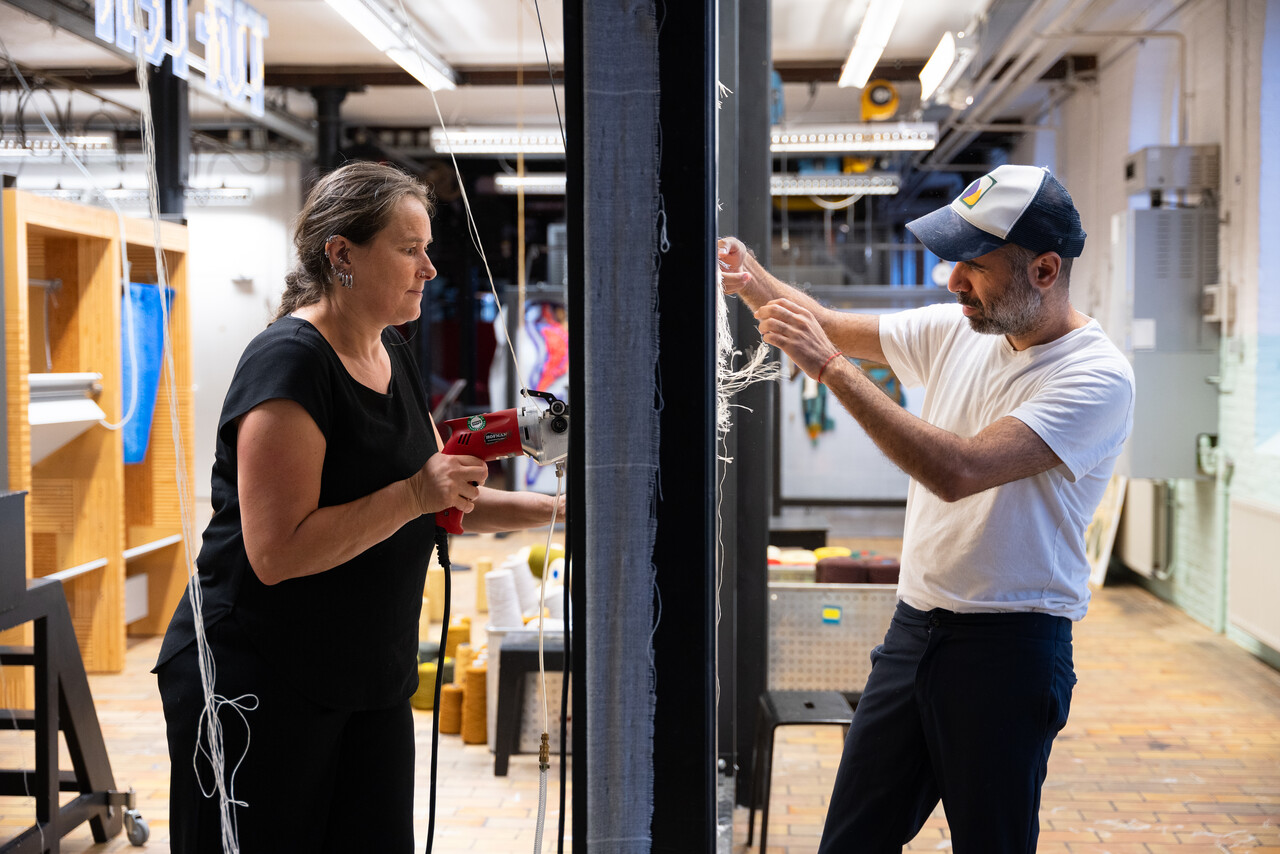
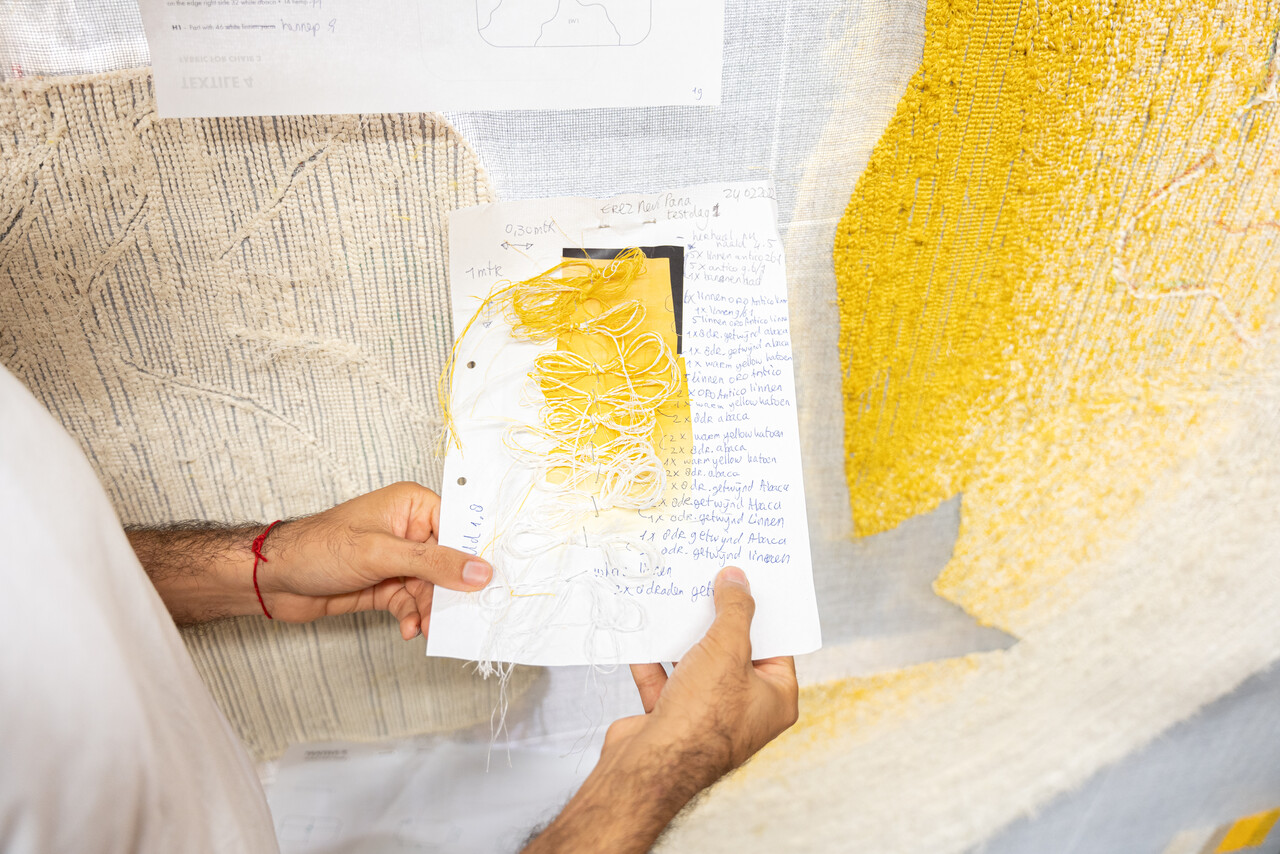
Hester Onijs and Erez Nevi Pana in the TextielLab. Photos: Patty van den Elshout.
“Producing my own material is the only way I can guarantee that no one has been exploited in the production process.”
Erez Nevi Pana
Banana yarn
In his doctoral research at the University of Art and Design in Linz, Austria, Nevi Pana is investigating whether it is possible to produce 100% vegan design. The two projects he realised in the TextielLab in 2023 and 2024 are part of this design research. “I’ve wanted to work in the TextielLab ever since my master’s degree at the Design Academy Eindhoven,” he says. He wondered in which technique his vegan approach would have the most impact and started with tufting. “Tufting is traditionally done with wool. I wanted to explore whether I could break that tradition by switching to a purely plant-based material.” He arrived in Tilburg with four kilos of home-grown banana yarn. With product developer Hester Onijs, he set about investigating whether they could tuft with it. “The great thing about this yarn is that it is made from the stems of the plant. These are cut after the banana harvest, so that new stems will grow again and again from the same plant. That makes it a very sustainable yarn and vegan friendly.”
Ripening
However, the banana fibres were not drawn through the tufting gun. So, the decision was made to blend them with other plant-based yarns such as seaweed, hemp, abaca, organic linen and cotton. By blending the yarns, the textile began to take shape, resembling the full structure of wool. The soft, fluffy tufted work, with yarns of different lengths, formed the basis for ‘Ripening’, a collection of seven seating objects and a rug. The rug, made in ripening shades from cream to yellow, can be seen until 3 November in the exhibition Makers on materials in Tilburg. Nevi Pana plans to return to Tilburg in the winter to put the finishing touches to the seating objects. These are made from frames of recycled waste upholstered with the tufted fabrics. To carry the vegan approach through to the last detail, he also wants to experiment with a soya glue finish.
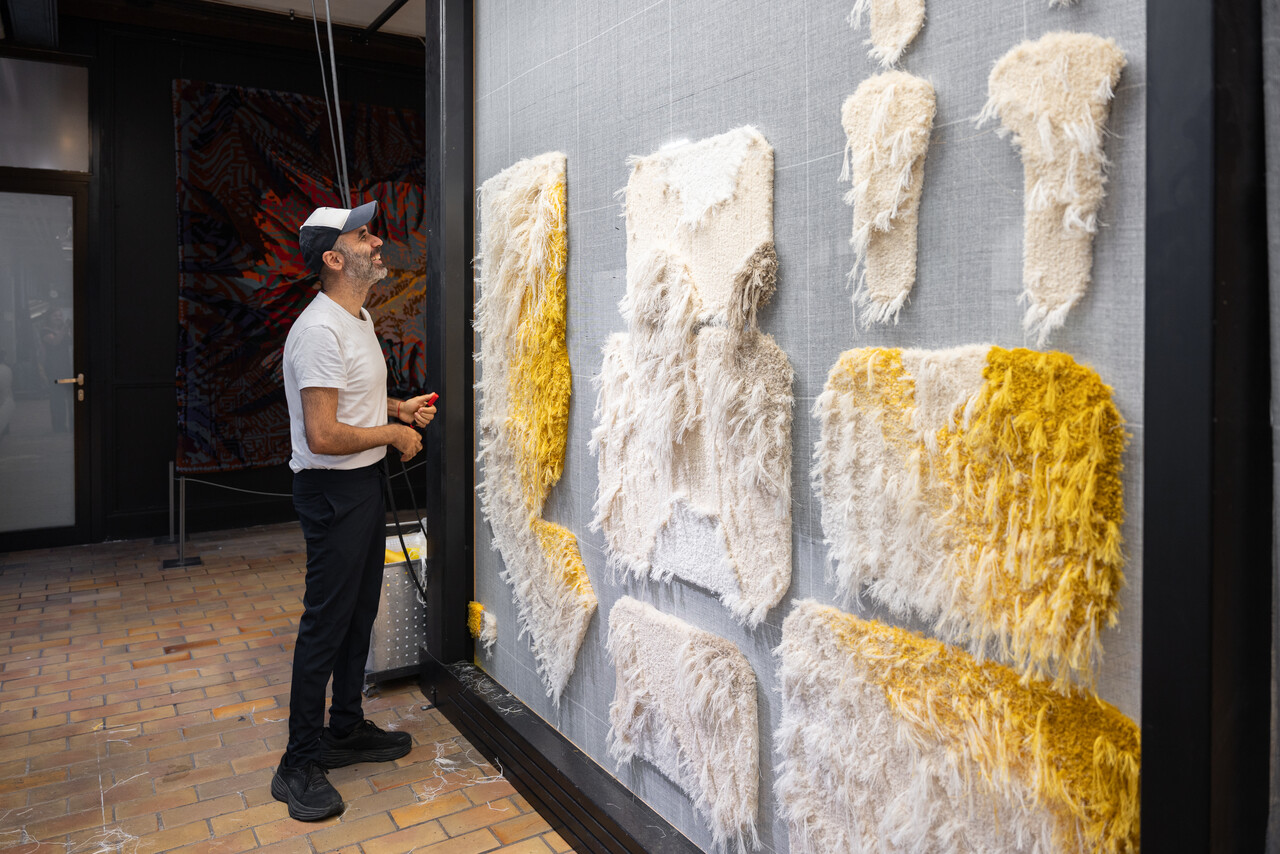
Erez Nevi Pana in the TextielLab. Photo: Patty van den Elshout.
Living together on Mars
In the meantime, the result of the second project that Nevi Pana started in the TextielLab and that was developed by the weaving cluster is on display in the exhibition in Jerusalem. The design for the rug ‘Life, as it appears from space, is down to Earth’ was a response to the terror of the attack on Israel on 7 October 2023. In a war-torn country, Nevi Pana asked primary school children to draw a future in which we would have to leave Earth and start over on Mars. What would this new society look like? And what would we take with us? He created a collage with details from 70 children’s drawings, revealing a pure and innocent view of this new world. “It was striking that most children did not focus on Mars but on Earth,” says Nevi Pana. “We are apparently not done here yet.” But we need to re-ground and restore our connection with Earth, he believes. The title of the work, which is woven between the padded planets, also responds to Neil Armstrong’s statement that he felt insignificant when he looked at Earth from the moon. Nevi Pana says, “We are not as superior as we think; we are actually very fragile.”
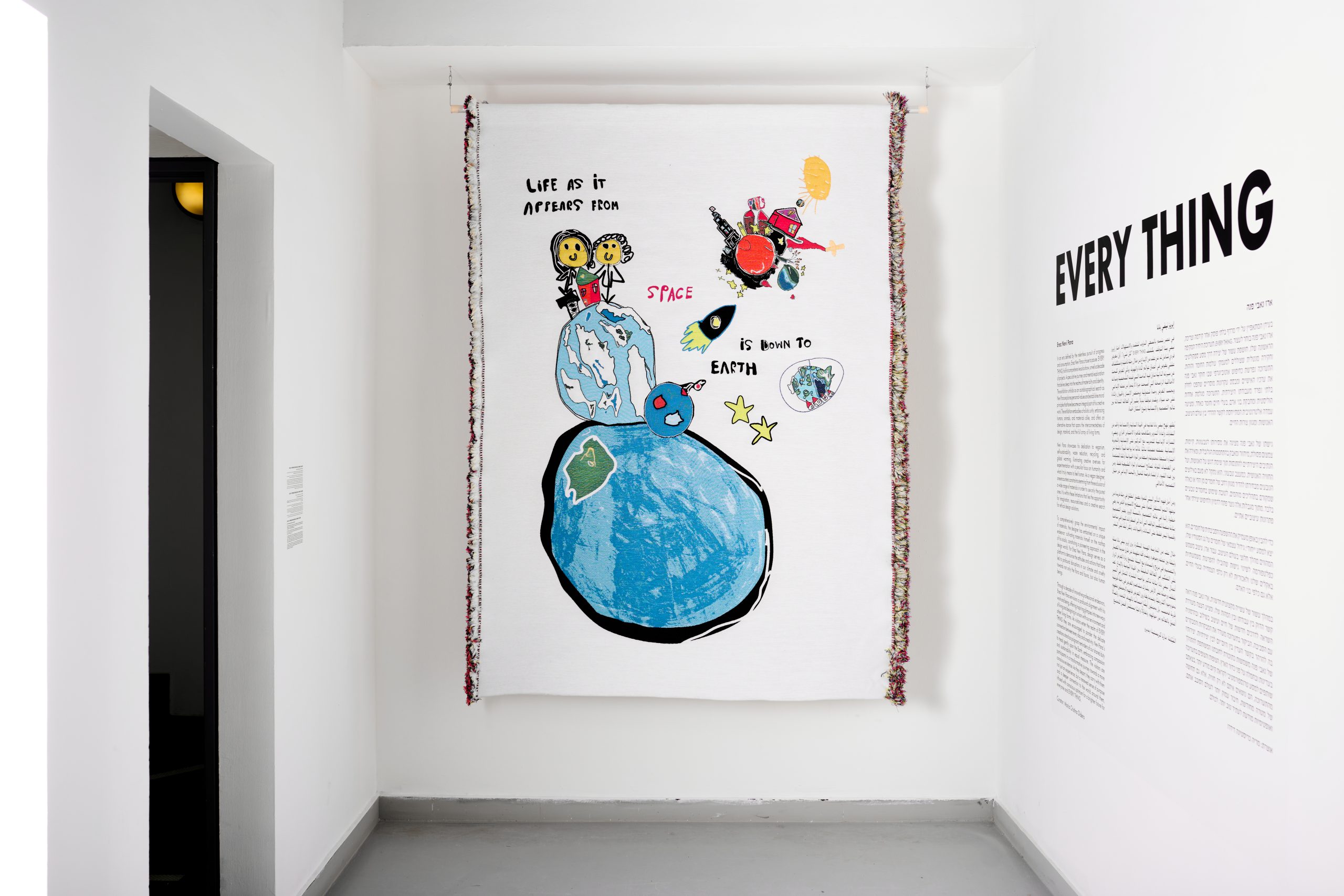
‘Life as it appears from Space is Down to Earth’ in Jeruzalem. Photo: Erez Nevi Pana.
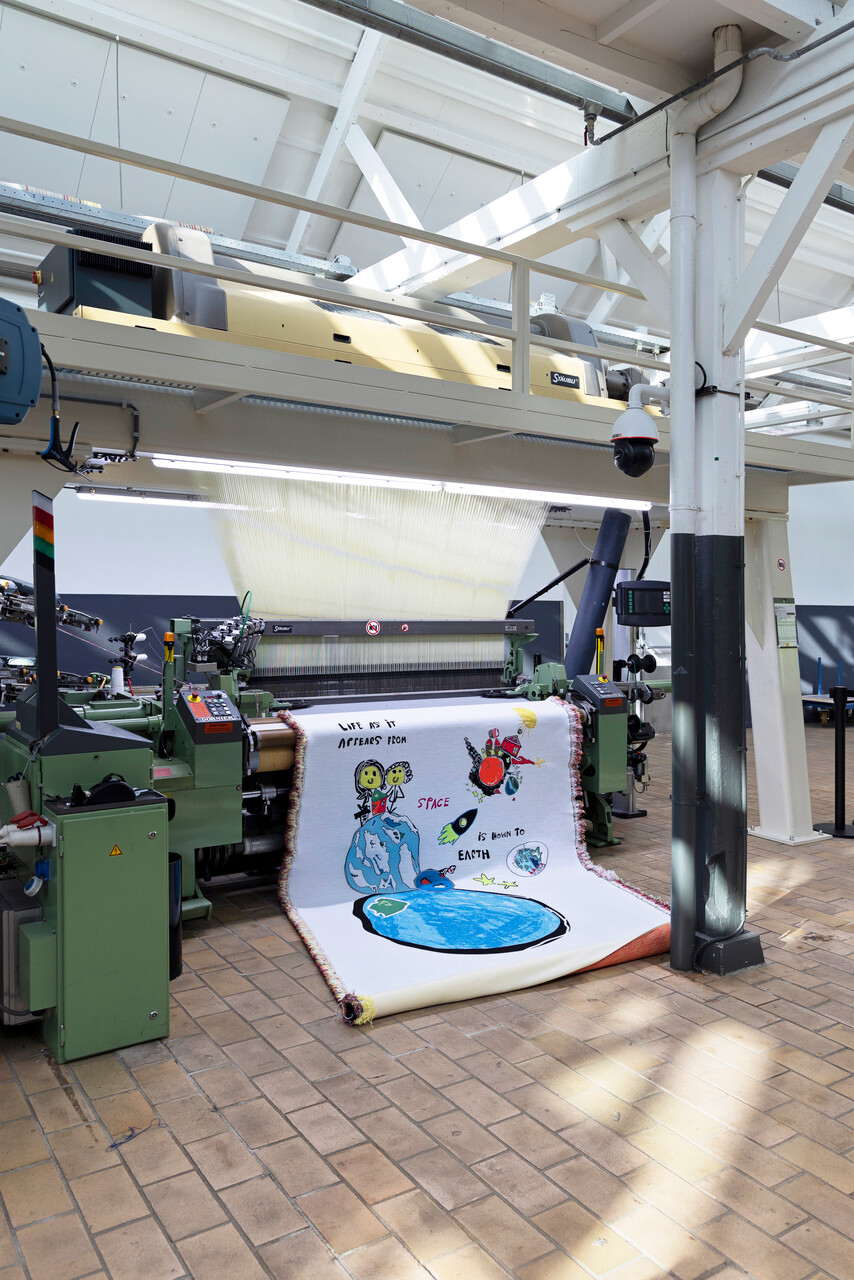
‘Life as it appears from Space is Down to Earth’ at the TextielLab. Photo: Josefina Eikenaar.
Hopeful blanket
When translating the drawings into a textile, it was important to maintain the naivety of the artworks and not to use animal yarn. Organic cotton was chosen for the images. The white background is woven with abaca, which is made from another type of banana. There is also a small amount of acrylic in the drawings: a few percent of fluorescent yellow and fluorescent orange acrylic for the neon colours of the marker pens the children used. Nevi Pana sees this as food for thought. “Plastic has become part of nature due to human actions. Should we take it to Mars, given what we now know about its impact?”
He says that he intended the textile to be a protective blanket. It hangs directly behind the museum’s glass entrance door in Jerusalem, and so is the first work you see when entering the building. Nevi Pana wants to use it to convey a hopeful message about the future. “I believe in peace, I have faith in harmony among humans, animals and the Earth. I embrace unity within diversity and envision a world without borders. Yes, I really believe in clichés.”
Text: Willemijn de Jonge